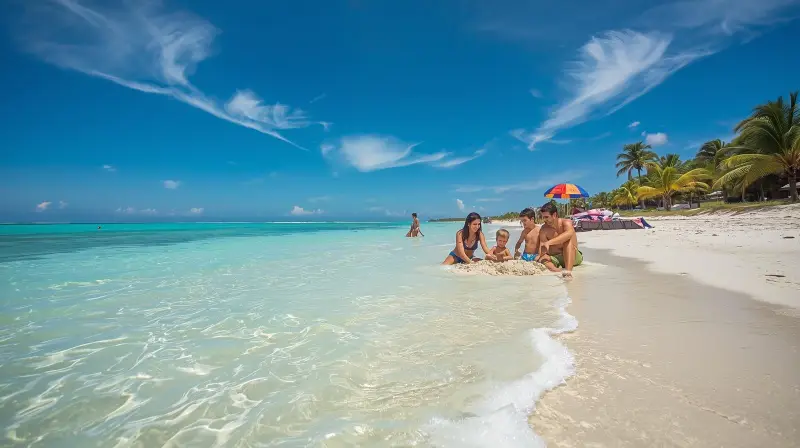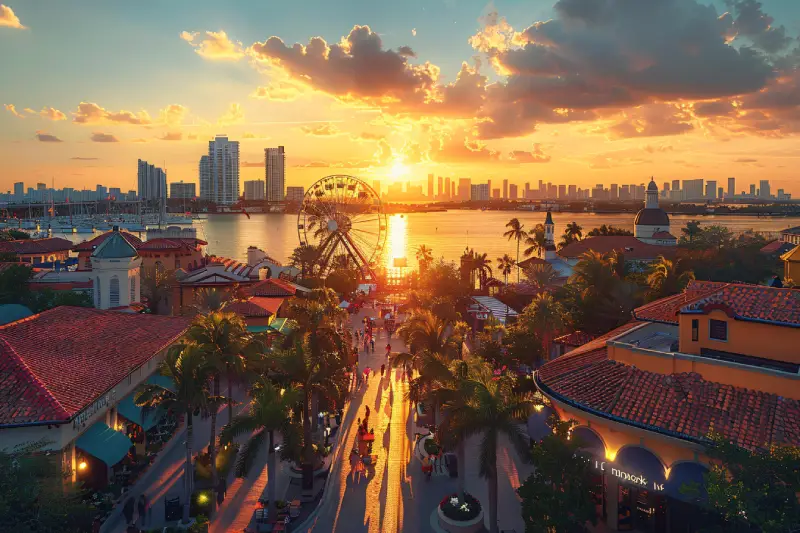A Guide to the Manhattan Neighborhoods
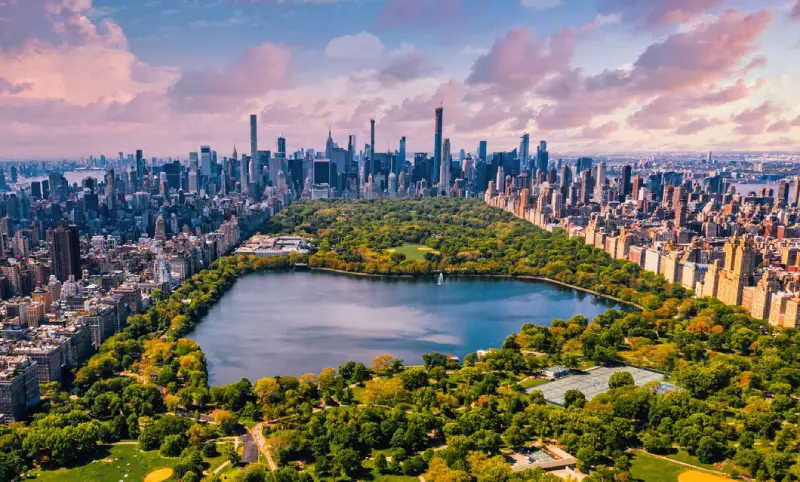
Table of Contents
ToggleManhattan is the heart of New York, a borough of the city rich in life, culture, and history. It is a vibrant and lively place, and the most populated part of New York. Manhattan is also considered the economic capital of the United States. The most beloved part of the city is split into various neighborhoods, each consisting of its unique characteristics and attractions. From the famous Central Park to iconic Wall Street, this borough of New York houses the most renowned places. This article will introduce and explain each neighborhood in detail and serve as the perfect guide to Manhattan neighborhoods. Before we move further, it is vital that we delve into the history of Manhattan.
History of Manhattan
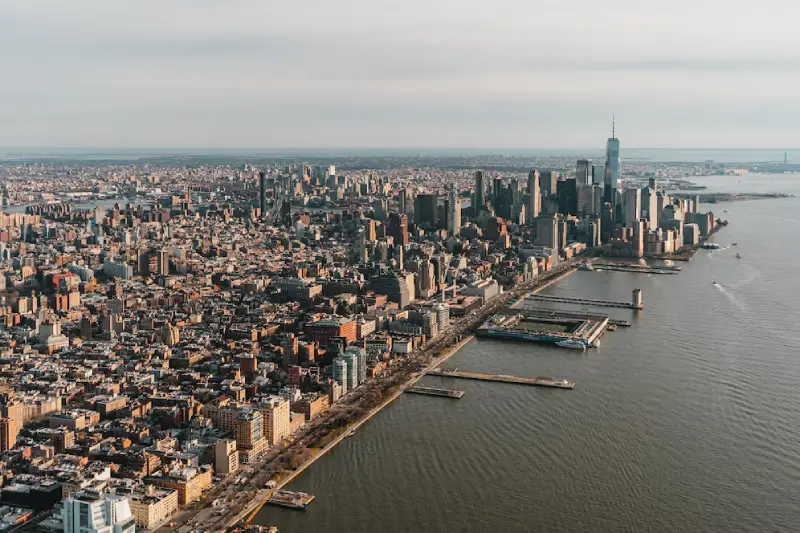
Manhattan’s history is as diverse as its neighborhoods. Originally, the island was part of the Lenape territory, home to the Munsee and Wappinger tribes. They called it Manhatta, which translates to ‘an island of hills’ or ‘place of gathering.’
In 1609, Henry Hudson, working for the Dutch East India Company, mapped Manhattan for the first time. By 1625, the Dutch established Fort Amsterdam in southern Manhattan, which became part of New Amsterdam. In 1626, Peter Minuit purchased Manhattan from locals in exchange for trade goods.
In 1664, the British colonizers invaded Manhattan and conquered the island, renaming it “New York” after the Duke of York.
Like many other parts of the country, Manhattan suffered significant damage and loss during the American Revolutionary War. However, it emerged from the conflict with renewed resilience and determination.
Manhattan, specifically New York, played a pivotal role in the early days of the United States. From 1785 to 1790, it served as the nation’s capital, a testament to its importance in shaping its history.
In 1898, Manhattan became a borough of New York City, joining the boroughs of Brooklyn, Richmond, Bronx, and Queens.
By the 19th Century, Manhattan had become a growing metropolis.
Your guide to the Manhattan neighborhoods
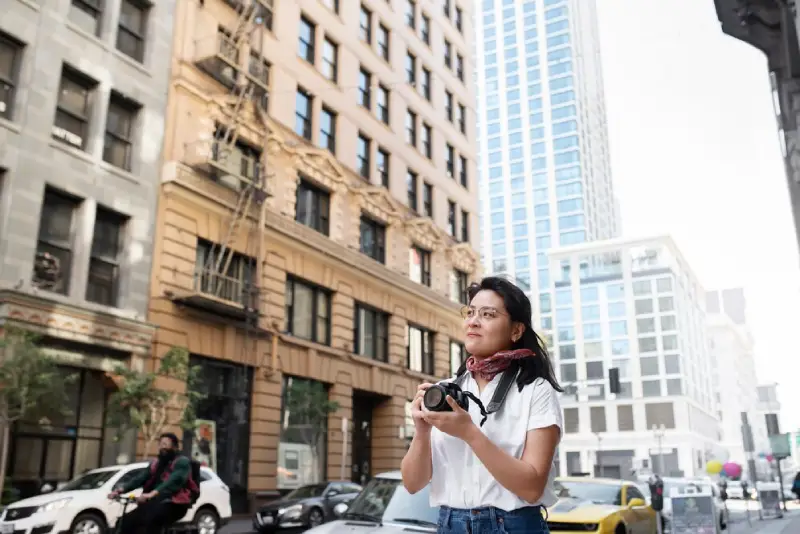
Manhattan, spanning 22.7 square miles, is a diverse borough made up of numerous neighborhoods. Each neighborhood offers a unique experience. Let’s take a closer look at each neighborhood and the distinct experiences they offer.
Uptown Manhattan
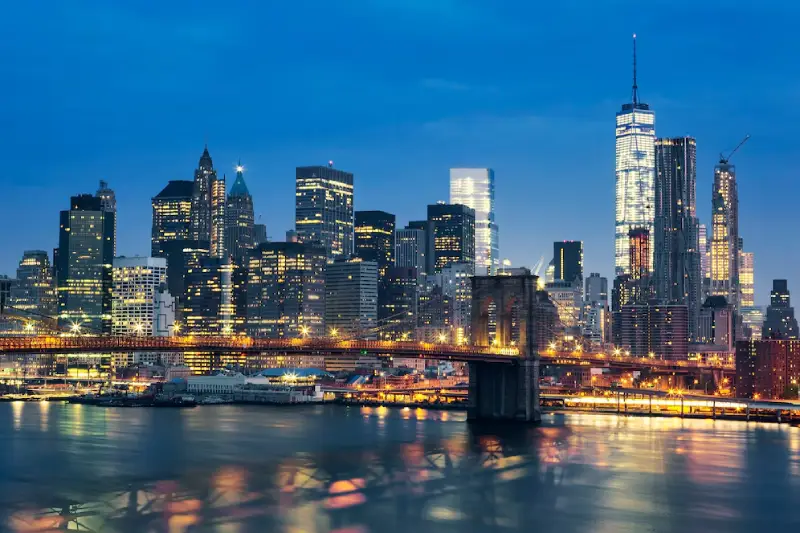
Uptown Manhattan, the northern part of the borough, begins at 59th Street and extends northwards. This area is known for its diverse neighborhoods and unique attractions.
Upper west side
Upper West Side is nestled between Central Park West and the Hudson River. The beauty of the Upper West Side is picturesque, with greenery all around. Upper West Side is home to the American Museum of National History, one of the world’s greatest museums. The Upper West Side also harbors the Lincoln Center for Performing Arts, which is the cultural powerhouse of the neighborhood. The New York Historical Society, New York’s oldest museum, showcases the history of New York and exhibits American art. Another serene park called Riverside Park is situated along the Hudson River, an enchanting waterfront park with scenic views. Zabar’s, an appetizing store in the Upper West Side of New York City, is world-famous for its selection of bagels, cheese, olives, smoked fish, and other Jewish and Ashkenazi foods; it is a fine institute for food lovers, well-known for its quality and New York vibes. The iconic Dakota building where Lauren Bacall, Rosemary Clooney, and Leonard Bernstein resided is also located on the Upper West Side.
Upper East Side
Upper East Side is known for being a wealthy and prestigious neighborhood. It is the residence of famous old-money families like the Roosevelts and Rockefellers. The Upper East Side has many luxurious and designer showrooms like Madison Avenue and elite restaurants and cafes like Daniel, the French Dining, and Cafe Boulud. Central Park is located between the Upper West Side and Upper East Side; hence, it is also in proximity to the Upper East Side. The most iconic Met Gala hosted by Anna Wintour, where celebrities worldwide show up in the most exquisite and unique outfits based on the theme, takes place at the Metropolitan Museum of Art on the Upper East Side. The renowned architect Frank Llyod Wright designed the Solomon R. Guggenheim Museum in the Upper East Side. The unique and contemporary architecture of the museum, along with its unique collections and art exhibitions, make it a must-visit.
Harlem
Harlem is known for its African American culture and jazz clubs. It is also famous for its soul food restaurants. The great migration in the 1900s led to the immigration of the black community in Harlem, who escaped the racism and violence in the South. By the 1930s, 70% of the population was African American. It became a center for American African artistry. The Harlem Renaissance in the 1920s was a cultural and social movement, a significant movement in black art and culture history, and a celebration of African American culture. The Apollo Theatre is the most prominent attraction of Harlem, the center for black performers, and has launched the careers of many famous Black artists. The National Jazz Museum showcases jazz history; it is an interesting place to learn about legendary musicians and jazz culture. The museum also has live performances. Red Rooster and Sylvia’s Restaurant are two of Harlem’s most famous restaurants serving delicious soul food. The 125th Street of Harlem is the commercial and cultural hub of the neighborhood. Marcus Garvey is the perfect spot to relax and enjoy the goodness of nature.
Washington Heights
Washington Heights is situated between the Hudson and Harlem Rivers. It is another vibrant and beautiful neighborhood of the uptown. It has one of the largest and best green spaces in Manhattan. Washington Heights is a testament to Dominican culture, with one of the largest Dominican American communities in the USA; Dominican people own many cafes, restaurants, and shops. The George Washington Bridge over the Hudson River connects Fort Lee to Manhattan in Washington Heights. The Cloisters, a serene and culturally rich museum and a branch of the Metropolitan Museum of Art (The MET) is located in Fort Tyron Park in Washington Heights. Fort Tyron Park is an alluring public park and the highest natural point in Manhattan. It is a beautiful natural green space with magnificent views, including that of the Hudson River; it also features Heather Garden, the largest public garden in New York. With a rich diversity in the community, Washington Heights homes Dominican, Puerto Rico, and other communities who immigrated to Manhattan during the 20th century. United Palace is a significant attraction of Manhattan; originally built as a movie palace in the 1930s, it is now a historic landmark with exquisitely designed posh theatres hosting live performances. Bennett Park in Washington Heights has one of the highest points of Manhattan. Morris-Jumel Mansion is the oldest house in Manhattan, built in 1765. It served as George Washington’s quarters during the Revolutionary War. The colonial style, beautiful architecture, Museums, and art exhibitions make this mansion worth visiting. The Hispanic Society Museum and Library has an extensive collection of Hispanic art and culture, a unique and valuable library.
Morningside Heights
Morningside Heights is a distinctive and tranquil neighborhood of Manhattan. It is well known for its academic atmosphere, and the prestigious Ivy League Columbia University is in Morningside Heights. With its proximity to Central Park, an iconic and one of the most famous public parks in the world with exquisite architecture and scenic beauty, considered a public oasis, Morningside Heights is an ideal place to explore various attractions. The Cathedral of Saint John Divine is the largest church in New York City and the fourth largest worldwide. The architecture and ambiance of this Cathedral are truly exquisite. Morningside Park, a magnificent green haven, is a great place to escape the chaos of the central city. Riverside Drive, which connects Riverside Park and the Hudson River, offers stunning views.
Inwood
Inwood is located between the Hudson River and Harlem River in the northernmost part of Manhattan. The Lenape Native Americans originally inhabited Inwood. During the 19th century, wealthy people shifted to Inwood to escape the city’s hustle. The construction of the Subway in Inwood led to more neighborhood development and immigration. It is a home to the people of diverse communities. Inwood has beautiful green spaces and architecture. Inwood Hill Park is an enchanting green refuge with woodlands, hiking trails, and a scenic waterfront with a gorgeous view of the Hudson River. Dyckman Farmhouse Museum is the last remaining colonial Farmhouse in Manhattan; it is a standing testament to the history of the colonial period in Manhattan and the Dyckman family. The idyllic Hudson River Greenway runs from Inwood to Battery Park in the South. Isham Park is a natural haven where one can find peace while experiencing the goodness and beauty of nature. The Dominican and Caribbean community runs local cafes offering tasty and authentic dishes. The uniquely designed, picturesque Franklin D. Roosevelt Four Freedoms State Park is a treat to the eyes.
Midtown Manhattan
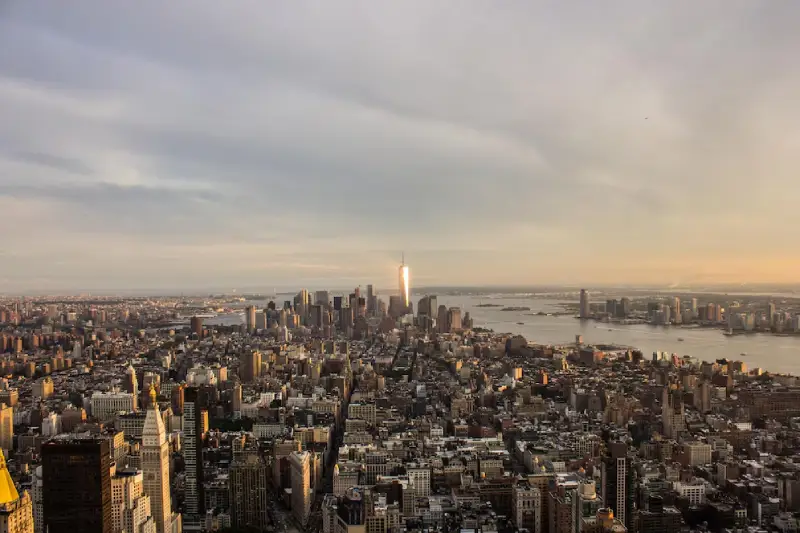
Midtown is the middle part of New York City, also known as the ‘heart of New York.’ It extends from 34th to 59th Street and is famous for its majestic skyscrapers, business districts, and high-end shopping.
Times Square
Times Square is one of the most famous neighborhoods in New York. Everyone desires to be at Times Square during Christmas and New Year as this place envelopes the festival’s spirit. The Ball Drop is a must-visit during Christmas! Times Square is the most loved and visited by tourists. When one talks about New York, Times Square is what one imagines at the instant second. It is one of the busiest places, the hub of Broadway theatre, and the prominent epicenter of the world’s entertainment industry. The world-famous Madame Tussauds, the iconic wax museum, is in Times Square where you can pose with life-like statues of international celebrities, including Marilyn Monroe, Charlie Chaplin, Bradd Pitt, Michael Jackson, Miley Cyrus, Messi, Jimmy Fellon, etc. A three-story M&M chocolate store that allows you to customize candies with your faces and other fun features is a fabulous place you must visit if you are in Times Square. Hershey’s Chocolate World is a fun place to dwell in nostalgia for the deliciousness of chocolates and sweet treats; you can create your own candy bar and experience other fun activities in this dream world. Ripley’s Believe It or Not is a quirky museum with unusual exhibits, pop-culture memorabilia, and interactive games. Broadway theatres in the theatre district of Times Square host iconic musicals, plays, and dramas. Times Square has various restaurants and cafes that offer a range of cuisines. Sit, relax, and Click pictures on the red steps at Duffy’s Square. Times Square is famous for its digital billboards and screens, one of the most famous aspects of New York City. The Disney Store is bliss for all Disney fans; it has a collection of Disney merchandise, including Disney toys, clothes, and accessories.
Chelsea
Chelsea is the most artistic neighborhood in the Manhattan borough and a cultural hub for millions of artists and art enthusiasts. Home to over 200 art galleries, Chelsea is the perfect abode for anyone who loves art. You can visit the High Line, formerly built as an elevated rail track, which has now been turned into a gorgeously designed and unique public park. The Chelsea market, which offers a variety of food items, is a famous place to try delicacies of seafood and gourmet bakery items. The Whitney Museum of American Art, located at the southern part of the High Line, is dedicated to 20th and 21st-century American Art; the museum’s architecture is a posh and contemporarily designed building worth visiting. The Rubin Museum is another museum in Chelsea that exhibits Himalayan and Indian art. Sports enthusiasts can enjoy their favorite activity at the Chelsea Piers, a waterfront complex with sports and recreational activities.
Rockefeller Center
Rockefeller is a mix of everything: art, culture, history, entertainment, shopping, and whatnot. The idea of the neighborhood was conceived by John D. Rockefeller and designed by Raymond Hood in the 1930s and 40s. One should experience the city’s beauty by visiting the Top of the Rock. Breathtaking views of the city and picturesque sunset and sunrise views from the top of the rock are unmatched. The Rockefeller Plaza during Christmas is a Christmas Haven with Ice Skating at the Rink and a Christmas Tree Lighting Ceremony. One of the largest indoor theatres, the Radio City Music Hall is a world-famous venue. Explore the NBC news behind the scenes going on the NBC studio tour. Underground Concourse is a large shopping and dining area with many retail stores and restaurants. There are many iconic statues and sculptures in the Rockefeller Center, such as the Prometheus and Atlas statues.
Hell’s Kitchen
Hell’s Kitchen is a Manhattan Midtown neighborhood with a wide range of cuisines and restaurants worldwide. Also known as Clinton, Hell’s Kitchen has developed a lot. It was named Hell’s Kitchen due to the poor conditions of the workers and laborers and the violence and crime rates in the 1800s. This place has numerous LGBTQ+ nightclubs and bars. It is the heart of Midtown, with proximity to other neighborhoods such as Times Square, Rockefeller Center, and the Empire State Building. The Intrepid Sea, an air and space museum in the Hell’s Kitchen, launched planes from World War II, fighter jets from Vietnam, and helicopters that NASA astronauts recovered. While it isn’t one of the greenest spaces in New York, even this neighborhood has a waterfront park- Hudson River Park. Hell’s Kitchen Flea Market is an excellent place to find various unique items such as antiques, vintage clothing, furniture, etc. Hell’s Kitchen also has theatres and live performances in Broadway shows.
Garment District
The Garment District, also known as the Fashion District of New York City, is a historical and cultural landmark. Home to fashion designers, textile manufacturers, and other key players in the fashion industry, the district is a living testament to the city’s fashion heritage. The Fashion Walk of Fame, a series of plaques honoring American fashion designers who have made significant contributions to the industry, is a must-see for fashion enthusiasts. As the city’s fashion capital, the Garment District hosts many shows and presentations during The New York Fashion Week, one of the most prestigious fashion events in the world. The Fashion Institute of Technology, a renowned fashion institute and the most fashionable museum in New York, is also located in the Garment District.
Kips Bay
The name Kips Bay was given to the neighborhood after the Dutch settler Jacobus Hendrickson Kip bought the land in 1655. Located in the eastern part of Manhattan, Kips Bay is known for its prominent residential appeal and proximity to various attractions and dining. The city provides scenic views as it is near the East River. The residencies of Kips Bay combine modern apartments and pre-war buildings, giving this neighborhood a unique appeal. Kips Bay has a variety of restaurants, bars, and cafes, from Italian to Asian; these restaurants serve a wide range of cuisines. Kips Bay Theatre is a classic theatre of the neighborhood. Kips Bay Plaza has numerous shops, restaurants, and boutiques. Kips Bay Tower is where you can experience the beauty of the city skyline. The enchanting East River Esplanade is a waterfront park and promenade that offers breathtaking views of the river, Brooklyn, and Manhattan skyline. St. Vartan Park is a green haven of the city, offering peace of nature and relaxation to the people. Baruch Performing Arts, the cultural epicenter of Kips Bay, hosts a range of performances, including Jazz, music, theatre, dance, and film screenings for the audience.
Downtown Manhattan

Lower Manhattan, or Downtown, is the southernmost part of Manhattan, considered the area below 14th Street. It is famous for its financial significance, history, culture, and combination of historic and modern architecture.
Financial District
The Financial District, or FiDi, is the economic epicenter and business hub of New York City. It is one of the most prominent financial centers in the world, home to one of the world’s top financial institutions and significant landmarks. This neighborhood is a mix of finance and commerce, culture, and history. Wall Street, the most iconic and famous street in the financial sector, is where the New York Stock Exchange (NYSE) and Federal Reserve Bank of New York are located. The charging bull sculpture on Wall Street represents wealth and prosperity. One World Trade Center (Freedom Tower), the tallest building in the United States, is the skyscraper that houses the largest community of media and tech innovators. It is a testament to hope and resilience following the infamous 9/11 incident that took place at the World Trade Center. The One World Observatory in the One World Trade Center invites visitors to enjoy a magical mountaintop-inspired experience at the top of the center; the unique elevator ride shows visitors the history of NYC on the screens on the elevator’s walls. The 9/11 Museum and Memorial in World Trade Center shows visitors the history of the 9/11 incident and the 1993 World Trade Center bombing at the place where the Twin Towers once stood. The World Trade Plaza is the public space surrounding the One World Trade Center in the financial district, which comprises green space, public art sculptures, etc. South Street Seaport, located along the East River, is a major port for shipping and trade; the area is full of cobblestone streets, warehouses, and modern retail and dining, combining historic and modern buildings. The Stone Street Historic District is one of the oldest streets of Manhattan, where people go for after-work drinks. Trinity Church, with its stunning interior design, is another attraction of the financial district. Besides being a financial hub, it is also home to various shops, bars, and restaurants.
Tribeca
The name Tribeca stands for ‘triangle below Canal Street,’ denoting the area’s geographical position. It is an artistic and vibrant neighborhood. It was full of warehouses and factories earlier, but Tribeca now has residential and commercial districts after redevelopment. It is home to cast-iron buildings and modern and historic buildings. Tribeca is known for its artistic and creative aspects, i.e., art galleries, performance spaces, and film festivals hosted in this neighborhood. It also has a multitude of dining arrangements, cafes, and boutiques. During the mid-20th century, when the industrial buildings became vacant due to a decline in manufacturing, artists started shifting to Tribeca warehouses as they were affordable living spaces. This transformed the neighborhood from an industrial neighborhood to an artistic hub. Now, it is known for its luxurious loft apartments and real estate, including modern condos and historic buildings. The Tribeca Film Festival is one of the significant events in the neighborhood. One of the festival’s founders is Robert De Niro, who is among the celebrities who live in Tribeca and significantly impacted the neighborhood’s upgradation. Many high-end dining establishments feature Michelin-starred chefs and award-winning menus. The Hudson River Park extends along the waterfront in Tribeca, offering a beautiful view.
SoHo
SoHo (South of Houston Street) is another trendy and iconic Manhattan neighborhood situated in the downtown. It is a lively, artsy, hip, and high-end neighborhood with luxurious and creative vibes. SoHo is now a prominent shopping spot in NYC with elegant and posh boutiques, retail stores, and designer shops. The neighborhood is home to numerous restaurants, cafes, and bars with international cuisine and boutique hotels. SoHo’s unique cast-iron architecture, cobblestone streets, and loft-style living add to its artsy magic. The New York City Fire Museum is a small museum dedicated to the history of the fire department of NYC. You can visit the Leslie-Lohman Museum of Art, a museum dedicated to LGBTQ+ art. The Museum of Ice Cream is a fun, playful, and quirky museum, a place that everyone will enjoy. It features interactive exhibits and art installations, including a Sprinkle pool, where you can dive in and have fun, a chocolate room with a delicious atmosphere, a confetti room, and an ice cream parlor to enjoy tasting ice creams. A colorful and delightful museum is a must-visit if you are in SoHo.
Greenwich Village
Greenwich Village, also known as ‘The Village,’ was once a rural country getaway for the wealthy New Yorkers. It was the epicenter of the Beat Generations in the 1960s, a group of Americans who challenged traditional societal norms and experimented with different human expressions, establishing a new counterculture. The Greenwich Village was the home of the first LGBTQ+ organization called the Society for Human Rights. Greenwich Village was also the site for the Stonewall riot; these riots paved the path for modern LGBTQ+ movements. Greenwich has a rich folk musical and political history that dates back to the 1960s. The beautiful Washington Square Park is known for its allure and arch. The legendary jazz club the Village Vanguard hosted celebrities like John Coltrane and Bill Evans. The apartment from the worldwide famous and beloved TV show ‘Friends’ is on Monroe Street in Greenwich Village. Greenwich Village is also home to New York University, a prestigious institution. The Stonewall Inn, where the Stonewall riots occurred, is a historical landmark; this area hosts a yearly pride parade. The Comedy Cellar is the comedy club that has contributed to launching famous comedians like Dave Chappelle and Chris Rock, offering some of the best comedy shows. Whitney Museum of American Art is dedicated to American art and artists. Bleecker Street has cafes, restaurants, boutiques, and music venues. There are many classic pizzerias like John’s of Bleecker Street and Joe’s Pizza, Vegan and vegetarian restaurants like Marty V’s Burger, brunch spots like the Grey Stone and Buvette, one of the best cocktail bars such as the Little Branch and McSorley’s Old Ale House.
Little Italy
As the name suggests, this neighborhood is called Little Italy, as during the1800s, Italian immigrants shifted to this neighborhood, bringing their culture, customs, language, and cuisine. Little Italy has developed recently, but it still has the touch of its immigrant roots. Little Italy is famous for its restaurants and delicious Italian cuisine, with legendary dining places in this neighborhood offering authentic Italian food. Lombardi’s pizzeria, considered the first pizzeria in the USA, is a classic restaurant known for its iconic, delicious, and authentic Napolean–style pizza cooked in a coal oven. The Ferrara family bakery and espresso cafe, run by the Ferrara family for over 100 years, is famous for its mouth-watering, legendary Cannoli and other delicious sweets. Di Palo’s, run by the Palo family for four generations, is a remarkable food shop selling authentic Italian items such as Artisan cheese, salami, pasta, sauces, etc. Little Italy hosts’ Feast of San Gennaro Festival’ every September, a vibrant fest and celebration with music shows, carnival rides, games, vendor shops, cultural celebration, and food stalls that serve authentic Italian dishes such as pizza, Cannoli, gelato, and spaghetti, religious ceremonies, and many more exciting activities. Mulberry Street is lined with restaurants, cafes, and shops. This street becomes even more lively during summer with an outdoor setting for dining and street festivals. Italian American Museum, dedicated to the history of Italian immigrants in America, tells much about the neighborhood’s history.
Chinatown
Chinatown in lower Manhattan is a lively and cultural neighborhood. It is home to a large population of Asian immigrants. Canal Street is a bustling street where street vendors sell knockoff designer items from luxurious brands such as Louis Vuitton, Chanel, and Rolex. It also has many Chinese shops that sell Asian goods. The Museum of Chinese in America (MOCA) exhibits the history of Chinese immigrants in the USA and artifacts. Columbus Park in Chinatown was once the First Street Burial Ground for the poor; later, it was renovated into a lovely public park. It is an outdoor space for all the people to enjoy fresh air, play traditional Chinese games, and relax. The park also hosts performances of traditional Chinese music. Chinatown Ice Cream Factory is known for its Asian-inspired ice cream flavors. Mahayana Buddhist Temple is one of the largest Buddha temples in the USA and has a serene environment. Chinatown is a food-serving paradise that offers authentic Chinese food. Noteworthy dining places that one must try are Dim Sum Go Go, which serves Dim Sum; Xi’an Famous Food for noodles; Dumpling House for Dumpings; Chong Qing Xiao Mian for spicy food; and Mei Li Wah Bakery for Chinese desserts.
Nolita
Nolita is short for North of Little Italy. It is nestled between Chinatown and Little Italy. Known for glamorous boutique shops, coffee shops, and fantastic dining places, Nolita is a cozy neighborhood where residents are usually familiar with each other and quite friendly. It is a small neighborhood that is relatively free of traffic and chaos. Elizabeth Street Garden is a sculpture garden where you can peacefully enjoy reading or spend Time in the garden’s serenity. Nolita Market has many gorgeous jewelry stores, fashion-forward boutiques, and designer stores. Nolita has some of the best dining spots, such as Estela, Rubirosa, The Butcher’s Daughter, Lupa Osteria Romana, and Cafe Integral. There are several art galleries, such as The Journal Gallery and Sargent’s Daughter, for art enthusiasts to explore in Nolita.
Lower East Side
Lower East Side is the most diverse neighborhood in New York City. Irish, Jewish, Italian, and Eastern European immigrants crowded this neighborhood in the late 1800s and 1900s; by the mid-20th century, this neighborhood became home to more diverse cultures and communities, including Puerto Rican and Asian populations. It is one of the artistic neighborhoods of Manhattan. The Lower East Side is also famous for its fantastic nightlife. It has the best cocktail bars, dance clubs, and live music venues. The Bowery Ballroom hosts live music and is considered one of the best music clubs in New York. The Lower East Side has multi-cuisine iconic restaurants with many options. Katz’s Delicatessen is famous for its Pastrami on rye, serving the best Jewish food. Lower East Side has antique shops, vintage boutiques, and shops that sell unique items and accessories. The tenement museum is dedicated to the history of immigrants and is where you can learn a lot about their struggles and lives.
Battery City Park
Battery City Park is located at the southernmost tip of Manhattan. This neighborhood is famous for its residential and recreational areas. It has beautiful waterfront views and offers a tranquil environment from the chaos of the main city. Battery Park, located outside and adjacent to this neighborhood, is a 25-acre park with beautiful waterfront paths and views of the Statue of Liberty. Teardrop Park, a peaceful and beautiful outdoor place, is a great place to enjoy nature and water features. Brookfield Place, a destination for shopping and dining, is a gorgeous glass-roofed complex. The picturesque Battery Park City Esplanade offers breathtaking views of the Hudson River, the Statue of Liberty, and the New Jersey skyline.
Conclusion
Each Manhattan neighborhood is unique and charming, famous for its own vibe, amenities, and attractions. Whether you want to shop from luxurious showrooms or cute local shops, Manhattan neighborhoods have everything that you are looking for. From historic and cultural museums and temples to exciting and euphoric nightclubs, Manhattan is a significant borough of New York City. This guide has covered the best neighborhoods for shopping and dining, including the Upper East Side, SoHo, Tribeca, Garment District, Chelsea, Chinatown, Little Italy, Greenwich Village, and more. We hope this comprehensive guide has equipped you with the knowledge to make the most of your Manhattan adventure. Thank you for reading.
Author
Book your fondest memory here
Popular Posts
Best Family-Friendly Beaches in Florida
With its pristine beaches and warm waters, Florida is a…
Best Beaches in Florida: From Clearwater to South Beach
Florida is a beach lover’s paradise, and that’s no exaggeration.…
Best Places to Visit in Florida During Winter
Winter is the perfect time to step away from the…
Categories
- Best Places (25)
- Destinations (26)
- Experiences (21)
- Photography (1)
- Travel (48)
- Travel Products (7)
- Trip Style (8)
Search With Tags
Join Our Newsletter
Get Your Daily
Dose
Of Travel Inspiration
"*" indicates required fields
